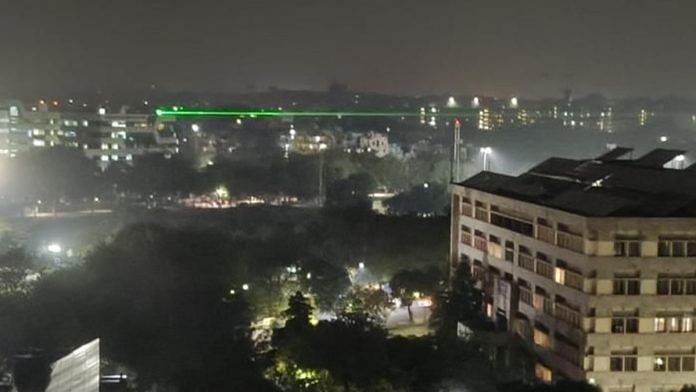New Delhi: In a step towards establishing secure communication without the need for optical fibre cables, the DRDO and IIT Delhi have successfully demonstrated free-space quantum secure communication using quantum entanglement over a distance of more than one km.
This was achieved via a free-space optical link established on the IIT Delhi campus by a research group led by Prof Bhaskar Kanseri.
The free space optical link is a line-of-sight technology that uses lasers to provide optical bandwidth connections. The experiment attained a secure key rate of nearly 240 bits per second with a quantum bit error rate of less than 7 percent, a statement released by the defence ministry said.
This entanglement-assisted quantum secure communication paves the way for real-time applications in quantum cyber security, including long-distance Quantum Key Distribution (QKD), the development of quantum networks, and the future quantum internet.
These efforts, said the ministry, align with India’s broader objectives to advance quantum technologies for national development.
The defence ministry said quantum entanglement-based QKD offers several significant advantages over the traditional prepare-and-measure method by enhancing both security and functionality.
“Even if devices are compromised or imperfect, the use of quantum entanglement ensures the security of key distribution. Any attempt to measure or intercept the entangled photons disturbs the quantum state, allowing authorised users to detect the presence of an eavesdropper,” it said.
This means that quantum communication provides fundamentally unbreakable encryption, making it a dual-use technology with applications in securing data in strategic sectors such as defence, finance, and telecommunications, as well as in protecting national security-related communications.
The process cuts away the need to lay optical fibre, which can be both disruptive and expensive, especially in challenging terrains and dense urban environments.
India’s first intercity quantum communication link was established in 2022 between Vindhyachal and Prayagrag. However, this was achieved through the use of commercial-grade underground dark optical fibre and demonstrated by DRDO scientists along with Prof Bhaskar’s team.
“More recently, in 2024, the team successfully distributed quantum keys using entanglement over a 100 km spool of telecom-grade optical fibre in another DRDO-supported project,” said the statement.
It added, “These technologies are being developed through DRDO-Industry-Academia – Centres of Excellence (DIA-CoEs) – an initiative of DRDO, where 15 Centres of Excellence have been established at premier academic institutes like IITs, IISc and Universities for development of cutting edge defence technologies.”
Congratulating DRDO and IIT Delhi, Defence Minister Rajnath Singh said with this achievement, “India entered into a new quantum era of secure communication which will be a game changer in future warfare”.
(Edited by Amrtansh Arora)
Also Read: What is 155 mm/52 calibre barrel DRDO is offering to private players as transfer of technology






